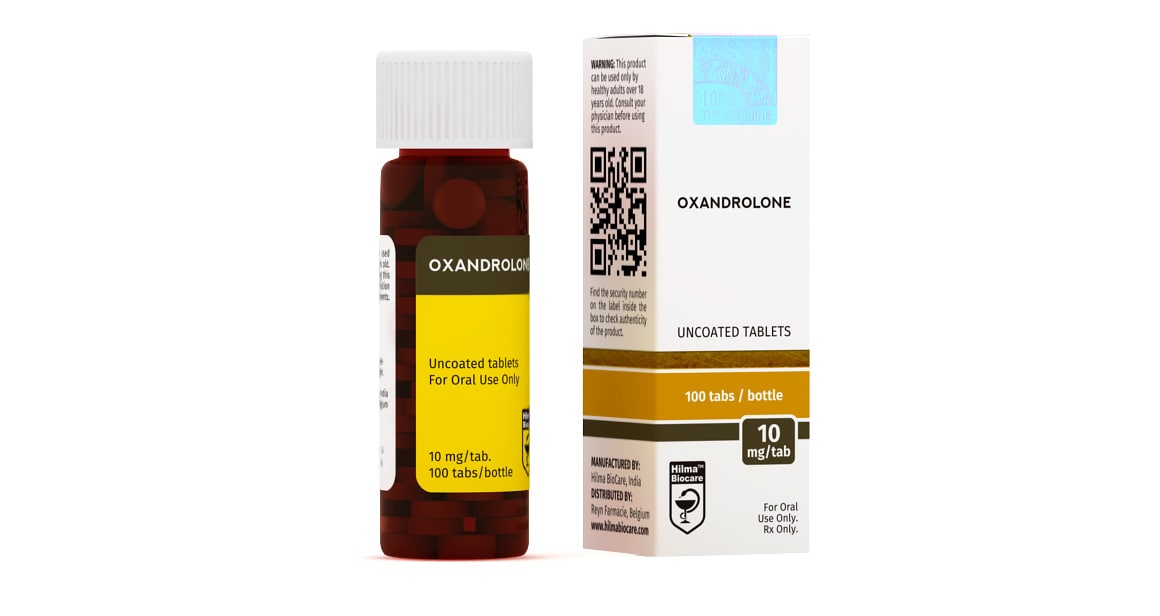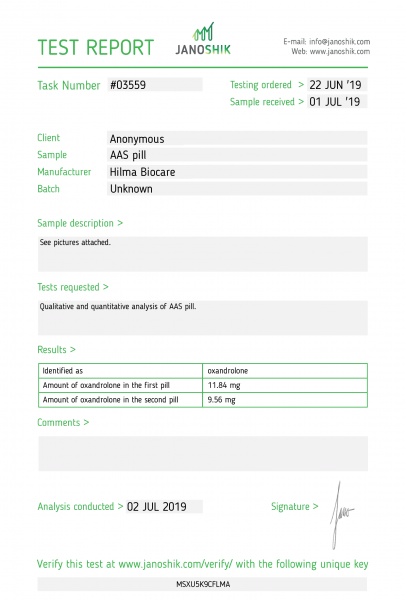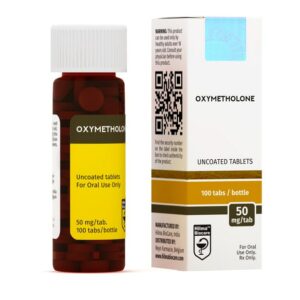Description
Oxandrolone
Strength: 10 mg
Molecular Formula: C19H3003
Molecular Weight: 306.44 g/mol
Active Ingredient: Oxandrolone
CAS number: 53-39-4
Dosage Form: Tablet
Route: Oral
Market Status: Prescription
Company: Hilma Biocare
DESCRIPTION
Oxandrolone 10 is a well tolerated 17-alpha alkylated anabolic steroid with very low hepatic
toxicity. It promotes anabolism through androgen receptor activity and has a low incidence of
adverse reactions. When taken in clinical doses, oxandrolone promotes improvements in
strength and moderate increases in muscle mass. Oxandrolone has been demonstrated to
enhance body fat reduction significantly in both the abdominal and visceral stores (Int. J.
Obesity, 1995; 19: 614-624). Oxandrolone will not aromatize and therefore the anabolic
effect of this compound can promote linear growth. Oxandrolone has shown great promise in
nerve regeneration, skin healing in burn victims, and increased rate of healing after traumatic
events.
CLINICAL PHARMACOLOGY
Anabolic steroids are synthetic derivatives of testosterone. Certain clinical effects and
adverse reactions demonstrate the androgenic properties of these drugs. Complete
dissociation of anabolic and androgenic effects has not been achieved. The actions of
anabolic steroids are thus similar to those of male sex hormones. Anabolic steroids suppress
the gonadotropic functions of the pituitary and may exert a direct effect upon the testes.
During exogenous administration of anabolic androgens, endogenous testosterone release
is inhibited through inhibition of pituitary luteinizing hormone (LH). At large doses,
spermatogenesis may be suppressed through feedback inhibition of pituitary
follicle-stimulating hormone (FSH). In single dose pharmacokinetic studies of oxandrolone
the mean elimination half-life was 13.3 hours in elderly subjects and 10.4 hours in younger
subjects.
INDICATION AND USAGE
Oxandrolone 10 is indicated as an alternate or adjunctive therapy in patients for the
promotion of weight gain following weight loss and/or muscular atrophy associated with
extensive surgery, chronic infections, long term hospitalization, or severe trauma. Oxandro
10 is indicated to compensate for protein catabolism consequent to corticosteroid therapy
and for the reduction of pain associated with osteoporosis.
CONTRAINDICATIONS
Patients with diagnosed or suspected carcinoma of the breast, prostate, or testis. Women
who are pregnant or may become pregnant because of possible masculinization of the fetus.
Patients with nephrosis or the nephrotic phase of nephritis. Patients with hypercalcemia.
Patients with pre-existing cardiac, respiratory, renal, and/or hepatic disease or history of
epilepsy.
PRECAUTIONS
Elevated liver enzymes and in extreme cases hepatic liver dysfunction may occur.
17-alpha-alkylated androgens may cause cholestatic hepatitis and jaundice, particularly with
larger dosages or prolonged treatment. Liver function should be monitored for changes
including serum bilirubin, aspartate aminotransferase (AST), alanine aminotransferase
(ALT), and alkaline phosphatase (AP). Edema may be increased in patients on concurrent
adrenal cortical steroid or ACTH therapy. Anabolic steroid hormones may increase
low-density lipoproteins (LDL) and decrease high density lipoproteins (HDL).Lipids levels
generally return to normal upon discontinuation of treatment. Anabolic steroids may reduce
clotting factors II, V, VII, and X, and may increase prothrombin time (PT). Patients should be
instructed to report any use of warfarin and any irregular bleeding. Diabetics: androgens may
alter the metabolism of oral hypoglycemic agents or may change insulin sensitivity in
patients with diabetes mellitus which may require adjustment of dosage of insulin and other
hypoglycemic drugs.
DRUG INTERACTIONS
Oral hypoglycemic agents: may inhibit the metabolism of oral hypoglycemic agents which
may require adjustment of dosage. Anticoagulants: Patients on anticoagulants should be
carefully monitored during anabolic steroid therapy as anabolic steroids may increase
sensitivity to oral anticoagulants. Patients should be monitored regularly during anabolic
steroid therapy, particularly during initiation and termination of therapy.
ADVERSE REACTIONS
Male: Gynecomastia, excessive frequency and duration of penile erections, oligospermia.
Skin and Appendages: Hirsutism, pattern baldness and acne, gynecomastia.
Fluid/electrolyte Disturbances: Retention of sodium, chloride, water, potassium, calcium, and
inorganic phosphates.
Gastrointestinal: Nausea,c cholestatic jaundice, alterations in liver function tests; rarely,
hepatocellular neoplasms, peliosis hepatitis, hepatic adenomas, and cholestatic hepatitis.
Hematologic: Suppression of clotting factors II, V, VII, & X; bleeding in patients on anticoagulant therapy.
Nervous System: Increased or decreased libido, headache, anxiety, depression, and
generalized paresthesia.
Metabolic: Increased serum creatinine phosphokinase (CPK), reduced glucose tolerance,
increased creatinine clearance, and inhibition of gonadotropin secretion. Other: Serum lipid
changes, hypercalcaemia, hypertension, oedema, priapism, and potentiation of sleep apnea.
DOSAGE AND ADMINISTRATION
Adult males: 10 – 30 mg taken orally per day in 2 to 3 divided doses for 6 to 8 weeks under
care of a physician.
PRESENTATION
Oxandrolone 10 mg uncoated tablets: 100 tablets in 1 bottle.
STORAGE
Store in a cool dry place between 15 – 25°C. Protect from light.





